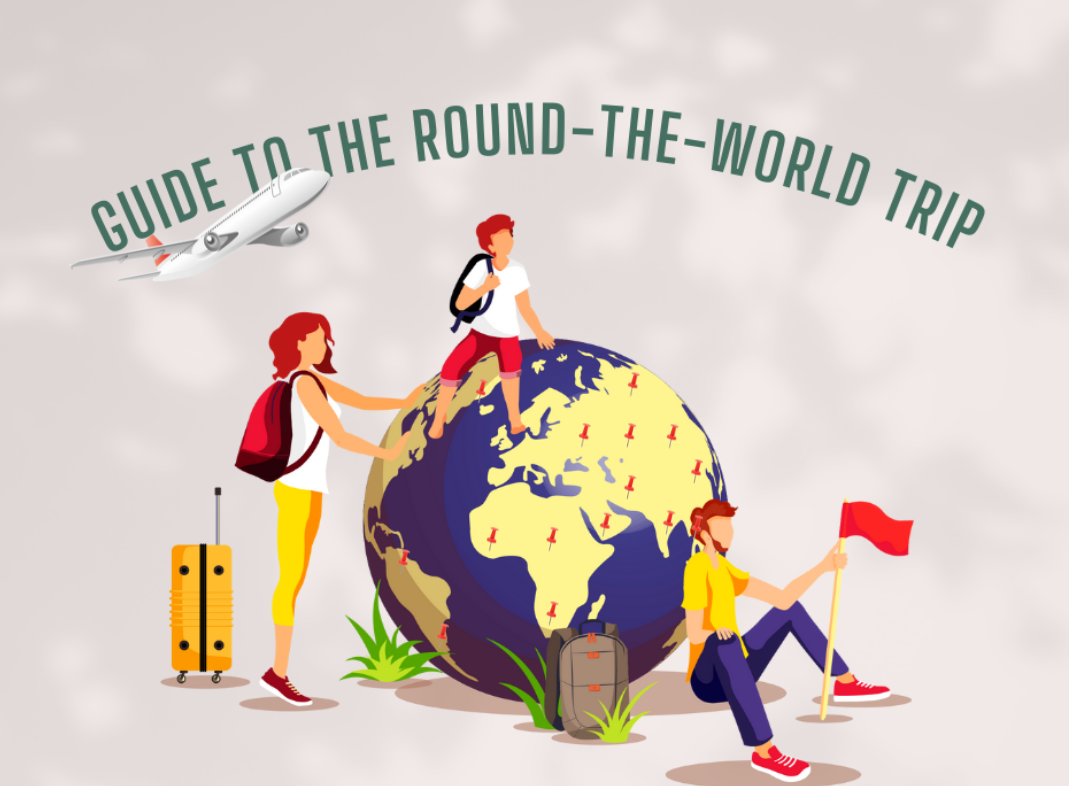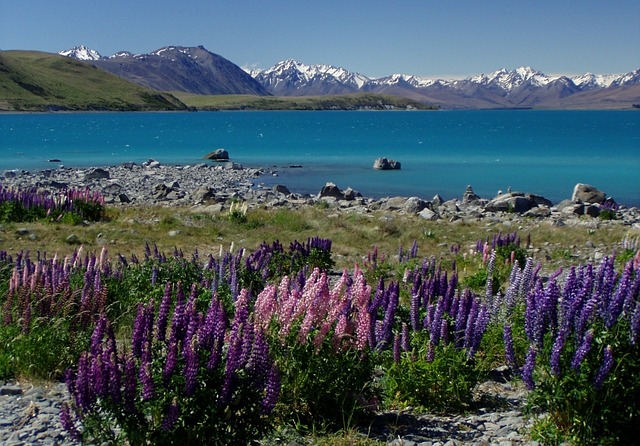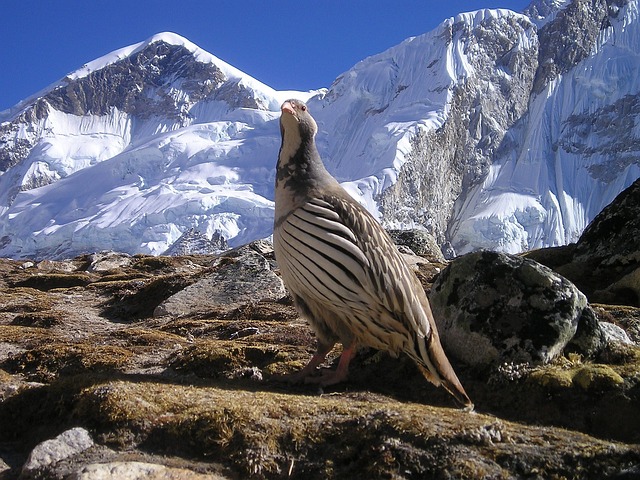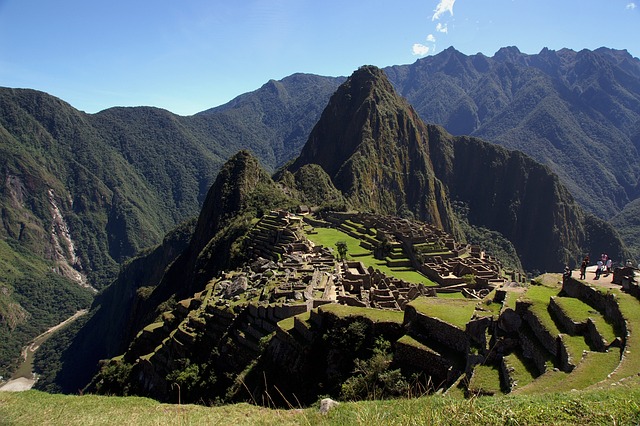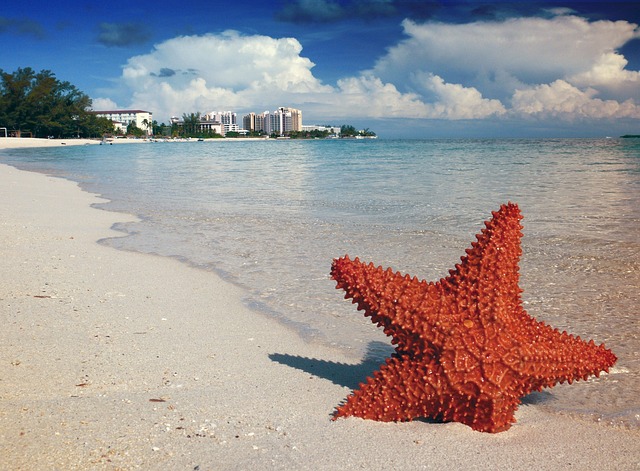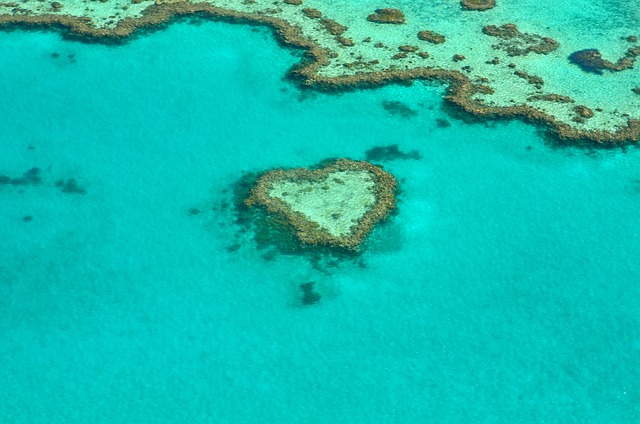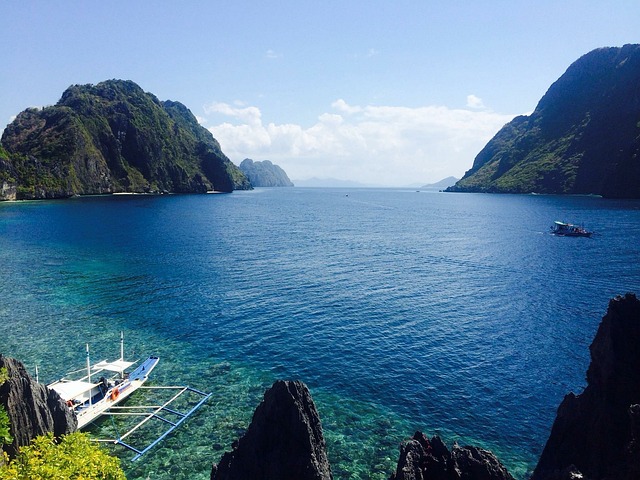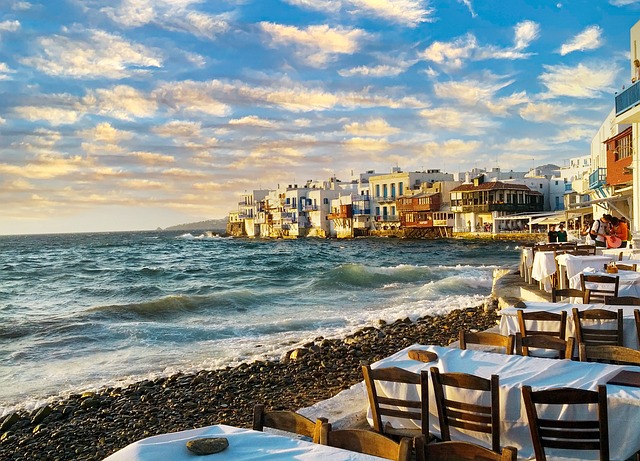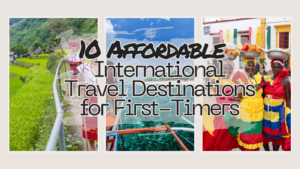Going on a round-the-world trip is more than a mere travel experience. It’s a transformative journey that promises personal growth, cultural immersion, and memories to last a lifetime.
Hang around as we create a comprehensive roadmap for your extraordinary round-the-world travel. Let this be your compass for navigating your (future) world trip, travel budget, saving up, and gathering invaluable insights to ensure your world trip becomes a journey worth remembering.
Key Takeaways:
- Craft your round-the-world expedition based on tips, insights, and personal experiences of people who have been there, without overplanning everything.
- Embrace flexibility in your travel plans. This will allow room for spontaneity and unexpected discoveries.
- Learn practical budget management and strategies as you go along, to allow you to maximize your adventure without breaking the bank.
- Friends from around the world? Hit them up, whether online or on the road to share experiences.
- Beyond the physical journey, open yourself up to new experiences. Personal growth and self-discovery go with round-the-world trips. Embrace it!
Beyond Guidebooks: Your Ticket to Your Dream Round-the-World Trip
Where to? Here are some places of interest around the world to help you narrow down your choices. Remember, this is your adventure of a lifetime. So dream big and create a round-the-world itinerary that truly excites you!
Note: The daily average cost included here refers only to what a backpacker (unless otherwise stated) would usually spend in a day – who stays in a modest accommodation, cooks most of his meals, and engages in free or cheap activities.
For the adventurous traveler who finds thrill in bungee jumping, ziplining, or mountaineering, how about a visit to…
New Zealand – $46-63
This Southern Hemisphere gem is home to mountains that touch the clouds, ice rivers that carve through green valleys, and where the friendly Maori people share their amazing culture.
Go zorbing in Rotorua, bungee jump off high bridges, skydive in Taupo, do aerial obstacle courses in Wellington or Auckland. New Zealand is a haven for adrenaline junkies.
Costa Rica – $40-48
Costa Rica is a small, green jewel nestled between the Pacific Ocean and the Caribbean Sea. It isn’t just about lush forests and adorable sloths. It also offers a lot of extreme adventure activities that’ll leave your heart pounding.
Arenal Volcano is known for its exhilarating ziplining activities. Venado Caves offer subterranean adventures like rappelling and discovering the secrets of the underworld.
Nepal – $25-50
Nepal is home to ancient temples, snow-capped peaks that pierce the sky, and yaks grazing on its green valleys. Mount Everest, the world’s highest mountain above sea level, is located in the Mahalangur Himal sub-range of the Himalayas in Nepal. It’s a popular destination for mountaineering and trekking enthusiasts from around the world.
For history buffs who’d rather visit ancient ruins, explore museums, or marvel at the ethereal beauty of historic sites.
Peru – $30-50
The third largest country in South America, Peru is the proud home of the Inca Empire and the iconic ancient city of Machu Picchu.
Caral is believed to be the oldest city in the Americas, the Caral-Supe archaeological site in north Lima dates back over 5,000 years.
Ollantaytambo is a town and Inca archaeological site in the Sacred Valley, featuring well-preserved ruins and terraces.
Egypt – $30-50
Egypt is home to the Nile River; the Pyramids of Giza – the last remaining of the original Seven Wonders of the World; and some of the world’s best museums.
The Grand Egyptian Museum (GEM) is a colossal project eagerly awaited by history buffs and museum enthusiasts worldwide. It’s not officially open yet, but it promises a showcase of some of Egypt’s most valuable treasures. It houses an unrivaled collection (over 100,000) of artifacts that’ll make it the world’s largest archaeological museum.
India – $30-45
India is the land of spices and smiles. Its landscape is a blend of bustling cities, serene mountain peaks, spices-filled bazaars, historical sites, and modern innovation.
The splendid Taj Mahal is a mausoleum complex in Agra, Uttar Pradesh. It’s a 17th century mausoleum built by emperor Shah Jahan in honor of his wife Mumtaz Mahal, who died in childbirth in 1631.
Bangalore (aka the Silicon Valley of India) is a major hub for technology and innovation, home to numerous IT companies, startups, and research institutions.
For the laid-back round-the-world traveler who prefers to spend time on pristine beaches, bask in the sun, and enjoy aquatic activities in paradise destinations.
Bahamas – $50-100
The Bahamas is known for its picturesque beaches, clear waters, and vibrant marine life. Its capital city Nassau is a bustling cruise port with mega resorts, shops, restaurants, and entertainment complexes.
Harbour Island is a popular destination famous for its pink sand beaches and laid-back atmosphere.
Bora Bora, French Polynesia
Bora Bora is a small island paradise that boasts a mesmerizing turquoise lagoon, luxurious overwater bungalows that offer ocean views, a majestic volcanic peak (Mount Otemanu) for exploration, and rich Polynesian culture to embrace.
Bora Bora is a haven for relaxation, romance, and adventure, making it a sought-after destination for travelers seeking an idyllic retreat.
A week’s vacation for a solo traveler in Bora Bora ranges from $5,000 to $7,000. This rough estimate covers flights, a beach bungalow, meals, beverages, and activities such as snorkeling or beachcombing.
For foodies and wine connoisseurs where discovering culinary delights and indulging in local flavors is a delight, better be in countries known for their delicious food.
Italy – $70
Italy is the undisputed champion of pasta, pizza, and wine. Its regional specialties like Tuscan ragu, Venetian cicchetti, and Neapolitan pizza can all be paired with world-renowned Sangiovese, Barolo, and Chianti wines.
Vietnam – $60-100 (mid-range)
Vietnam’s fresh spring rolls, vibrant pho noodle soups, and flavorful banh mi sandwiches are just a glimpse of Vietnam’s street food scene. Local rice wines and craft beers add another layer to this Southeast Asian culinary adventure.
For nature lovers around the world who find peace in the wilderness and encounter diverse species of wildlife.
Madagascar – $81 (mid-range)
Madagascar is home to the endangered baobab trees, spiny forests, and vibrant coral reefs. It offers a fascinating glimpse into biodiversity. See lemurs in the Tsingy de Bemaraha National Park with its otherworldly limestone spires, or trek through granite highlands of Andringitra National Park.
Great Barrier Reef, Australia
The Great Barrier Reef is the world’s largest coral reef system located in the Coral Sea, off the coast of Queensland, Australia.
The Reef is so large that it can be seen from space. It’s a bit over 500,000 years old, and is home to several endangered species, including the dugong, the green turtle, and the giant clam. It’s a UNESCO World Heritage Site recognized for its outstanding universal value and significance.
Day tours in the reef range from $220-250 per person. This covers snacks and lunch, scuba diving, and snorkeling, including gear.
For budget-conscious round-the-world travelers who are looking forward to exploring places that offer value for money.
Palawan, Philippines – $30-50
Palawan is known for its diverse wildlife, jungle-covered mountains, and pristine beaches. It’s home to hidden lagoons, limestone cliffs teeming with caves, and the Puerto Princesa Underground River National Park. It’s a recognized UNESCO World Heritage Site and one of the New 7 Wonders of Nature. This recognition speaks volumes about its exceptional natural beauty and ecological importance.
Greece – $75-108
Greece is home to the Acropolis and Parthenon in Athens, the ancient city of Delphi, and the archaeological site of Olympia. Its cultural influence extends to the arts, language, philosophy, politics, and sports.
Known for its beautiful islands including Crete, Mykonos, and Santorini, island hopping is part of the Greek experience. But ferries can be expensive, so plan your itinerary to take advantage of slower, cheaper ferries, or consider island-hopping tours that focus on lesser-known gems like Koufonisia, Amorgos, Naxos, etc.
Tips for choosing the right destinations for you
Write down all the places around the world you’ve ever dreamed of visiting. Prioritize them and consider their feasibility within your budget and chosen timeframe.
Check out countries with travel restrictions and visa requirements so you can prepare for and ensure a smooth round-the-world trip.
Follow and read a travel blog, watch documentaries, and have a few words with experienced travelers. These are a great resource for travel tips and hacks, and discovering all the ins and outs of traveling around the world. Get inspired by diverse itineraries and hidden gems!
When is the right time to travel?
Research peak seasons, rainy seasons, and ideal times for specific activities like hiking or wildlife viewing. Choose destinations based on your desired weather conditions.
Time your trip to coincide with cultural festivals, sporting events, or unique happenings you wouldn’t want to miss. This adds extra excitement and local flavor to your journey.
Consider your ideal travel temperatures, tolerance for crowds, and desired level of activity. Do you prefer bustling summer activities or serene winter landscapes? Tailor your itinerary to your comfort and interests.
The big question: how much does a round-the-world trip cost?
Here’s a rough estimate per person. Actual costs depend heavily on your specific itinerary, travel style, and spending habits. But this should give you a general idea of the potential cost difference.
Quick trip: (40 days, 5 destinations) – $15,000-$25,000
Slow trip: (6 months, 10 destinations) – $20,000-$35,000
For those on a tight budget, staying in budget accommodations, using public transportation, and limiting costly activities, the cost might range from $20,000 to $40,000.
For mid-range travelers seeking a balance between budget and luxury can go for a mix of cheap and mid-range accommodations, varied transportation options, and a moderate budget for activities. This may cost between $40,000 and $60,000.
For luxury travelers who choose prime accommodations, private transportation, fine dining, and indulge in high-end activities, the cost could exceed $60,000 and go well into the six-figure range.
These estimates fluctuate based on:
Destinations. The cost of living and travel expenses vary from country to country. Visiting more expensive destinations will naturally increase the overall cost.
Travel Duration. The longer the trip, the more expenses you’ll incur. This includes accommodation, transportation, and daily living costs.
Activities. Engaging in costly activities, such as safaris, guided tours, or extreme sports, can significantly impact the budget.
Accommodation. Staying in hostels versus luxury hotels has a substantial effect on the overall cost.
Transportation. The choice between economy and business class, and the mode of transportation (flights, trains, buses), influence the budget.
Personal Spending Habits. How much you spend on dining, shopping, and entertainment, contribute to the overall cost.
Set a realistic financial plan based on your preferences. The cost of travel insurance, visa processing, vaccinations, and other unforeseen expenses should also be considered.
Many travelers also include a buffer for unexpected costs or emergencies. Efficient planning and research are key to managing costs during a round-the-world trip.
Book your flights: Get an affordable RTW ticket
Round-the-world (RTW) tickets are special airline tickets that allow travelers to visit several destinations around the world with a single airline ticket purchase.
RTW tickets are often sold at a fixed price, offering cost savings compared to buying individual one-way tickets for each leg of the journey. The price may depend on factors such as the number of stops, travel class, and airline alliances.
RTW tickets have a specific flight path – either eastward or westward. Travelers must follow the chosen direction throughout their trip, circling the globe in one continuous path.
RTW tickets usually have a predetermined travel period during which the trip must be completed. This could range from a few months to a year, offering flexibility for an extended trip.
RTW tickets are often offered by airline alliances, such as Star Alliance, oneworld, or SkyTeam. These alliances include multiple member airlines, allowing travelers to choose from a variety of carriers for their world flights.
While the overall route is planned, there’s flexibility in adjusting your route or departure date. Changes are usually allowed but may incur additional fees.
An RTW ticket comes with specific booking rules, such as starting and ending the trip in the same country, crossing both the Atlantic and Pacific Oceans, and completing it within the specified time frame.
Many airlines or travel agencies provide tools or assistance to help you plan your RTW itinerary. These tools may include a world trip planner, or the expertise of travel consultants.
Some RTW tickets have mileage limits, which means there’s a maximum distance (in miles or kilometers) that you can cover with one ticket. If exceeded, additional charges may apply.
RTW tickets are generally available to anyone, but eligibility criteria, such as residency or citizenship, may apply depending on the airline alliance.
Carefully read the terms and conditions, understand the rules, and plan your itinerary according to the specific guidelines provided by the airline alliance or ticket issuer before you decide to buy a round-the-world ticket.
Types of RTW tickets
Economy-class RTW flight tickets range between $2,500–$10,000, depending on your mileage, route, and flight dates.
Business-class round the world tickets offer a more comfortable and luxurious travel experience, with prices starting from around $5,000.
A first-class round the world ticket provides the ultimate in luxury and comfort, with prices starting from around $10,000.
Some airlines offer premium economy upgrades for round-the-world tickets, providing a more comfortable seating experience and additional amenities.
Some also offer multi-city flights, which allow you to visit multiple destinations without the need for a full round-the-world ticket.
The most popular airlines that offer round-the-world tickets are typically part of major airline alliances, including:
Oneworld Alliance includes airlines such as American Airlines, British Airways, Cathay Pacific, and Qantas.
Star Alliance includes Air Canada, United Airlines, Lufthansa, and Singapore Airlines.
SkyTeam Alliance includes Air France, Delta Air Lines, KLM, and Korean Air.
How long does it take to save for a round-the-world trip?
There’s no one-size-fits-all answer to how long it takes to save for your dream round-the-world trip of a lifetime.
A higher income allows for faster savings. Other travellers have existing debts or dependents which can significantly affect their savings rate.
With little planning, a backpacking round-the-world trip that lasts for several months might need a 6-12 months’ worth of savings. Or even longer, depending on income, desired vacation spots, and lifestyle.
Aim for 12-24 months of savings if you desire a more comfortable mid-range round the world travel experience with occasional splurges for your next destination.
A luxury round-the-world trip with extensive travel and 5-star accommodations may require, for your travel dreams to come true, saving for several years, depending on your income, desired travel duration, and level of extravagance.
Set your travel budget and start saving for the big trip!
Saving up for your life changing round-the-world trip of a lifetime brings a ton of benefits!
By setting a financial plan and saving in advance, you won’t have to worry about scrambling for funds during your trip or coming back home with a mountain of debt.
Budgeting makes you prioritize experiences and avoid impulse buying. You’ll be more conscious of your spending and less likely to blow your funds on souvenirs or overpriced meals.
It encourages you to start planning and find creative ways to save and travel economically. You’ll discover hacks, discounts, and alternative experiences that enrich your trip around the world.
Unexpected expenses are inevitable during world travel. Having a buffer fund helps you navigate these situations without compromising your entire world trip.
Knowing how much you have helps you decide about transportation, accommodation, activities, and dining. You can compare options and choose the ones that offer the best value for your money. It helps you book flights and accommodation in advance to secure better deals and avoid last-minute stress.
Transportation options
Your choice of public transport defines the kind of adventure you embark on. Some people prefer a tightly-planned trip, others prefer flexibility. Certain routes offer open-ended tickets or spontaneous travel by bus or boat.
Pre-booked flights provide structured movement. Choosing your transport style lets you adjust your itinerary on the go if needed.
Flights might be the fastest. They allow you to cover vast distances quickly, enabling a fast-paced travel with many destinations. Taking a direct flight instead of multiple connecting flights can save time and reduce the risk of missing connections.
Overland travel lets you immerse yourself in landscapes and local cultures, providing a slower, more experiential adventure.
Taking a train or a bus can provide a more comfortable and scenic trip.
Ships let you savor the ocean and can be considerably cheaper, especially if you prioritize slower travel.
Accommodation options
Accommodation plays a vital role in your well-being during a long trip. Determining your accommodation options for a round-the-world trip is essential for maintaining energy and enjoying your adventures.
While immersing oneself in local culture is great, occasionally seeking the comfort and predictability of a major hotel chain provides a restful break.
Staying in hostels, guesthouses, or Airbnb rentals offer a more social and economical option. And can significantly reduce your expenses.
Extended stay hotels or homestays offer unique cultural experiences and opportunities to interact with locals.
Advantages of having a pre-booked accommodation
Having a pre-booked accommodation avoids the stress of searching for unfamiliar places upon arrival, especially in new countries or at night.
Some travel insurance policies require proof of pre-booked accommodation to be valid, so booking ahead can provide extra security in case of unforeseen circumstances.
Some visa applications require proof of accommodation throughout your trip around the world, so having bookings confirmed streamlines the process.
A reputable and well-reviewed accommodation provides a secure base for your belongings and a safe haven for relaxation.
Pre-booked accommodations also allow you to take advantage of early booking discounts and promotions, potentially saving you money on your world trip.
How long does it take to complete a round the world trip?
The duration of a round-the-world (RTW) trip varies based on your preferences, travel style, and the number of destinations included in your itinerary. Round the world tickets usually offer a minimum of 10 days and a maximum of one year to complete the journey.
The pace at which you travel affects the overall duration. Other backpackers prefer fast travel, while others opt for a slower pace.
The mode of transport you chose for the trip influences the time spent in transit. Overland travel by bus or train is cheaper, but may take longer than flying between locations.
The kind of activities you prefer and the time spent engaging in these activities such as trekking or attending events can also affect the duration of the trip.
Weather conditions and seasons can impact travel plans and the cost you incur. Some regions are best visited during the shoulder months, which is cheaper than a visit during the peak season.
Your funds also influence the duration of your trip. A longer trip is more expensive. So planning the duration of your RTW trip according to your budgetary constraints will be helpful.
Don’t Over-plan your Ultimate Round-the-World Trip
Consider the big events and festivals
Considering big events and festivals when choosing your travel destination can add some serious wow factor to your round-the-world trip!
Festivals showcase a place’s essence – its traditions, music, food, and people. Imagine yourself immersed in the vibrant Rio Carnival in Brazil. That experience is far more enriching than simply sightseeing.
Big events offer unique experiences not found in regular world trips, like witnessing the Northern Lights at Tromsø’s Aurora Borealis Festival or joining Munich’s famous Oktoberfest.
Music festivals and food fairs often provide bundled experiences – live performances, workshops, tastings – at a lower or no extra cost than booking them all separately. Some local festivals are even free or affordable.
Understanding Diverse Cultures and Landscapes
Understanding cultures and landscapes helps you choose world trips that align with your interests and preferences. Knowing what awaits can guide your itinerary creation.
Understanding the climate and terrain of your round-the-world vacation spots allows you to pack efficiently.
Knowing proper greetings and dining etiquette helps you avoid awkward situations. Tipping expectations, bartering practices, and appropriate dress codes – especially when visiting religious sites or conservative countries.
Taking time to learn a few basic phrases in the local language shows respect and interest in the culture. It’d also help you communicate and make connections with locals.
Planning a round-the-world trip as a couple?
Planning together and combining itineraries is crucial for a successful and harmonious trip. It allows you to define your travel priorities as a couple.
Do you crave adventure? Cultural immersion or relaxation? Discussing these desires upfront helps create an itinerary that caters to both your preferences.
Planning sessions become brainstorming opportunities where you can find creative solutions to accommodate each other’s wishes and deal with potential conflicts.
The planning process itself can be a bonding experience. Discussing exciting tourist spots, new cultures and other amazing things, overcoming logistical challenges, and building anticipation together can strengthen your relationship.
Compare and combine your individual bucket list
Comparing individual wish lists helps identify shared priorities and eliminates overlap, creating a streamlined itinerary that optimizes your time and resources.
Sharing individual research brings new attractions and experiences to light. You might discover a hidden gem your partner stumbled upon that wouldn’t have made it on your initial list.
Combining interests balances the itinerary between your preferences. This ensures both of you get to experience things you’re passionate about.
Leave room for spontaneity and unexpected encounters. Plot a rough trip itinerary that isn’t rigid. It should be a framework for shared adventure.
RTW planning and combining your itineraries create a world trip that caters to both your individual travel plans and shared aspirations.
So enjoy the planning process, especially if it’s your first trip together, and let it strengthen your bond with your partner. In life and in travel!
Slow travel vs visiting lots of places: which is better?
Slow travel lets you immerse yourself in a destination and enjoy it at a leisurely pace. This means spending more time in fewer places, getting to know the local culture, and really connecting with the place.
Pros:
- You get to spend more time trying local food, learning their language, and making friends with locals.
- Slow travel is economical, and less stressful than trying to see everything in a short amount of time.
- You don’t need to take as many flights or use as much transportation, which is good for the environment.
- Slow travel can help individuals recover from burnout and improve their overall well-being by providing a space to think, feel, and grow, away from social obligations and the pressures of daily life.
Cons:
- If you have financial constraints or limited vacation time, slow travel may not be an option for you.
- Slow travel can be boring for some people.
Visiting lots of places is the more traditional approach to round-the-world travel, where you try to cram as many places as possible into your trip. This can be a great way to see a lot of the world, but it can also be rushed and tiring.
Pros:
- This approach allows you to check off more items on your travel bucket list and see more sights.
- Visiting many countries means you’re always on the go, which is exciting.
- It’s cheaper to visit multiple places on one trip, especially if you can take advantage of deals and discounts.
Cons:
- Constantly moving from one route to another keeps you from getting to know more about a specific place.
- Trying to see everything in a short amount of time can be stressful and overwhelming.
- Fast travel makes you take more flights, which isn’t as sustainable as slow travel. And you contribute to the overtourism of some places.
How to pack for an around the world trip?
Make a packing list and pack accordingly. Suitable clothing that can be layered, mixed and matched, like including at least 5 shirts, 2 pairs of shorts, and a pair of pants.
Your necessary travel documents such as travel insurance papers, flight tickets, your round the world ticket if you bought one, and other essentials should be in your carry on bag, including prescription medication.
Bring toiletries, hygiene kit, comfortable shoes for walking and hiking, a pair of sandals or flip-flops for the beach or shower.
Bring a camera, phone, charger, and other electronics. A luggage lock, a small daypack, and safety essentials such as a door stop, or a safety whistle should also be included in your packing list.
Conclusion:
As we conclude this guide to your dream round-the-world trip, remember that the beauty lies not just in the places you visit, but in the transformation of your perspective and the stories that go in every step.
So be flexible, be spontaneous. Let the world be your guide as you craft the tale of exploration that’s uniquely yours.
This trip is also about self discovery, the infinite possibilities life offers, and how amazing it can be outside your comfort zone.
FAQs:
What is the longest nonstop flight on Earth?
The longest nonstop flight is from Singapore to New York City, operated by Singapore Airlines using their Airbus A350-900ULR aircraft. This impressive flight covers a distance of 15,349 kilometers (9,537 miles) that usually takes about 18.5 hours, depending on the weather.
What’s the cost of a 1 year round-the-world trip?
A year of world travel can cost anywhere from $12,000 for budget backpackers in Southeast Asia to $50,000+ for luxury globetrotters. Expect around $20,000-$30,000 for a mid-range adventure, and much higher for luxury travelers.
How long would a round the world trip take?
A typical RTW ticket allows at least 10 days, making for a whirlwind adventure. Aim for at least two to six months to realistically experience your trip.
What’s the best way to go around the world?
Go for the hybrid approach. Combine cheap flights with regional train, bus, or ferry travel. This offers more freedom and affordability than a round-the-world ticket while letting you cover wider territory than backpacking.
What is the safest form of long distance travel?
Air travel. Statistically, airplanes are the safest way to travel long distances. The accident rate is incredibly low, and rigorous safety regulations are in place.

